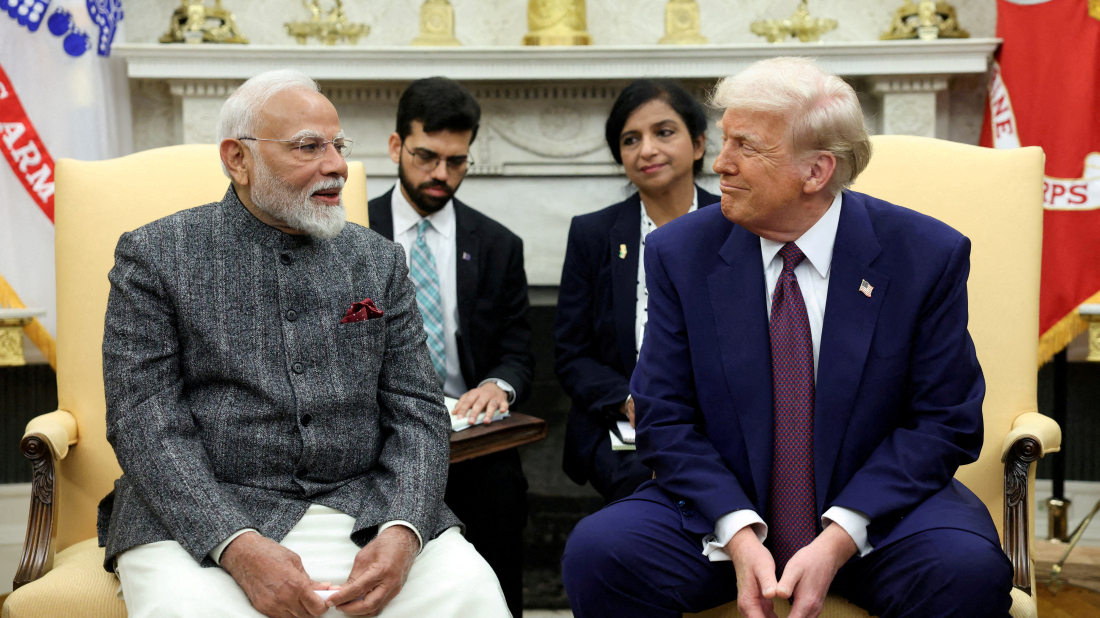Putin’s Ukraine aims unchanged
U.S. intelligence sources indicate that Russian President Vladimir Putin still intends to take control of all of Ukraine and reclaim parts of Europe t...

The U.S. has doubled tariffs on Indian goods to 50%, heightening trade tensions with one of its closest strategic partners and threatening thousands of exporters and jobs in India.
This follows an existing 25% tariff imposed over India’s purchases of Russian oil, bringing total duties to among the highest the U.S. has levied, comparable to rates for Brazil and China.
The new tariffs could affect thousands of small exporters, especially in Prime Minister Narendra Modi’s home state of Gujarat.
An anonymous Indian Commerce Ministry official said exporters would receive financial assistance and be encouraged to explore markets in China, Latin America, and the Middle East.
U.S. Customs and Border Protection allowed a three-week exemption for goods already in transit, permitting them to enter at lower rates before 17 September. Products such as steel, aluminium, passenger vehicles, and copper remain subject to separate Section 232 tariffs of up to 50%.
The tariffs follow five rounds of unsuccessful negotiations, during which India had hoped U.S. duties would be capped at 15%, similar to other major trade partners.
Both sides attributed the breakdown to political misjudgments and missed signals. Bilateral trade between the two economies totaled $129 billion in 2024, with a $45.8 billion U.S. trade deficit.
Experts estimate nearly 55% of India’s $87 billion in exports to the U.S. could be affected, potentially benefiting competitors like Vietnam, Bangladesh, and China.
Sustained high tariffs may also undermine India’s appeal as an alternative manufacturing hub to China for electronics and smartphones.
Ukraine has welcomed the European Union’s decision to provide €90 billion in support over the next two years, calling it a vital lifeline even as the bloc failed to reach agreement on using frozen Russian assets to finance the aid.
European Union foreign policy chief Kaja Kallas has warned that attempts to reach a peace agreement in Ukraine are being undermined by Russia’s continued refusal to engage meaningfully in negotiations.
Petroleum products are being transported by rail from Azerbaijan to Armenia for the first time in decades. The move is hailed as a tangible breakthrough in efforts to normalise relations between the long-time rivals.
Chinese Foreign Minister Wang Yi has held a phone conversation with his Venezuelan counterpart Yvan Gil at the latter’s request.
A rare pair of bright-green Nike “Grinch” sneakers worn and signed by the late NBA legend Kobe Bryant have gone on public display in Beverly Hills, ahead of an auction that could set a new record for sports memorabilia.
U.S. intelligence sources indicate that Russian President Vladimir Putin still intends to take control of all of Ukraine and reclaim parts of Europe that once belonged to the Soviet Union. These assessments contradict Putin’s repeated claims that he poses no threat to Europe.
UN Secretary-General Antonio Guterres has issued a stark warning over the humanitarian situation in the Gaza Strip.
The United States says it is working to secure a renewed ceasefire between Thailand and Cambodia, expressing cautious optimism that an agreement could be reached early next week, Secretary of State Marco Rubio said on Friday.
Iran has called for greater international support in hosting millions of Afghan refugees, warning that it is becoming increasingly difficult to manage the long-term humanitarian burden without a fair sharing of responsibilities.
Ukraine has carried out its first aerial drone strike on a Russian “shadow fleet” oil tanker in the Mediterranean Sea, reflecting a growing intensity in Kyiv’s attacks on Russian oil shipping, officials said on Friday (19 December).
You can download the AnewZ application from Play Store and the App Store.

What is your opinion on this topic?
Leave the first comment